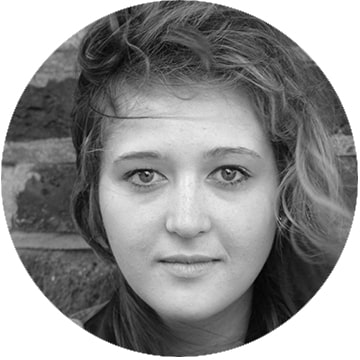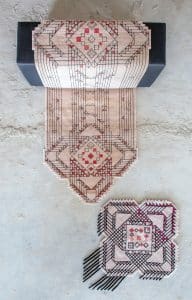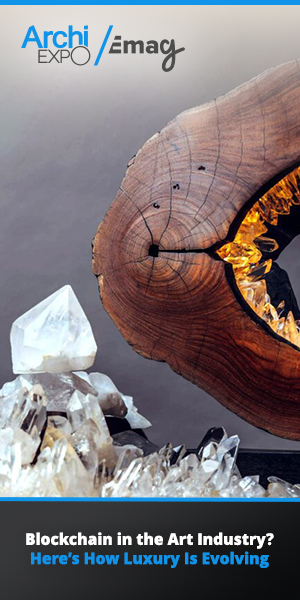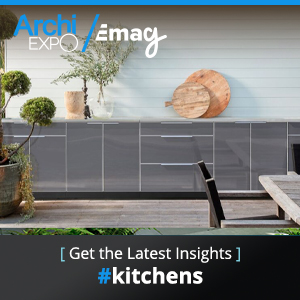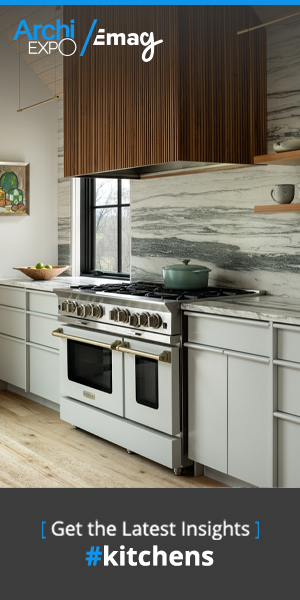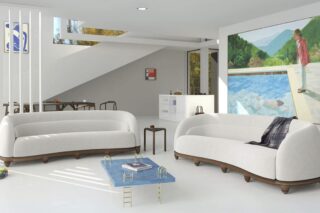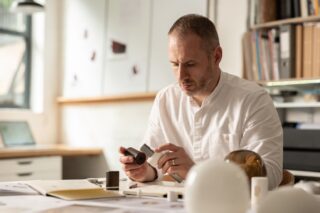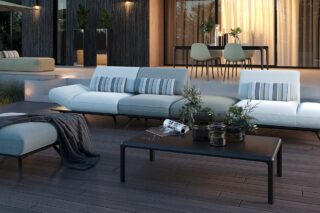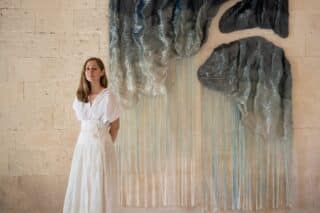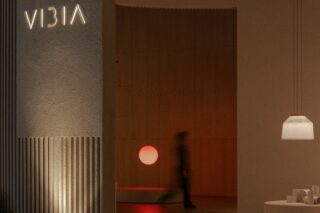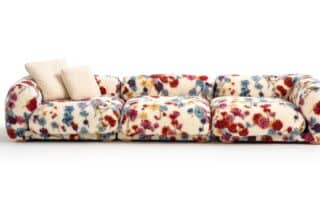In the land of mountainous golden sand, a certain ethnic heritage is on the verge of extinction. Bedouin women in rural communities of the United Arab Emirates would produce soft furnishings and decorative accessories for camels and horses. Their products portray a traditional form of weaving, known as Al Sadu in the UAE.
To promote Al Sadu and the desert-dwelling Bedouin, to allow heritage to live on, UAE designer Aljoud Lootah launched her new products Uwairyan and Misnad in 2015. Produced with 100% natural dyed wool and weaved using the traditional Al Sadu technique, Lootah’s carpets play with forms and patterns.
Aljoud Lootah speaks to ArchiExpo e-Magazine about these products, recently showcased at Abu Dhabi’s new cultural exposition platform Warehouse 421.
ArchiExpo e-Magazine: What do the names “Uwairyan” and “Misnad” stand for?
Aljoud Lootah: Uwairyan is a traditional Al Sadu pattern. The term refers to the two-toned triangles woven together to form an hourglass shape.
Misnad is a small rectangular cushion that is mainly used as an armrest. Attached to a bench, the rug may be used as a seat or as a ‘Misnad’ that we may lean on while sitting on the part of the carpet that is on the floor.
Originally, Al sadu Techniques are employed by Bedouin women living in the desert or small oasis villages in the UAE. My products “Uwairyan” and “Misnad” are woven by Afghani artisans.
ArchiExpo e-Magazine: Do the Afghani makers master Al Sadu techniques in the same way as UAE craftswomen?
Aljoud Lootah: No, as they work mainly with the traditional Afghani carpets. Having them work for me was quite challenging as they were used to a certain design and process of weaving. We had to concentrate on multiple small samples before we could finalize the design and go to full production.
ArchiExpo e-Magazine: What is the meaning of geometric patterns in your interpretation of Al Sadu carpets?
Aljoud Lootah: Usually the patterns of Al Sadu represent environment. Triangles imitate heaps of dates and sand dunes, other shapes may symbolize camels, palm trees etc. In my designs I mainly focused on triangles and lines as they are the most prominent shapes in Al Sadu.
ArchiExpo e-Magazine: What’s the purpose of using traditional Al Sadu colors: white, brown, red, and beige?
Aljoud Lootah: It is important to merge a little of everything to come up with a creative, unique piece. On the one hand, materials, colors and shapes create the aesthetics of a product, on the other hand, styles, functions and concepts play another role – they tell a story.

